Close
WikiliQ
Wine in San Benito County

All About Wine in San Benito County
Wine is an alcoholic drink typically made from fermented grape juice. Yeast consumes the sugar in the grapes and converts it to ethanol, carbon dioxide, and heat. Different varieties of grapes and strains of yeasts produce different styles of wine. WikipediaFind Wine

FILTERS
Close
Apply Filters
Calera Mt. Harlan Viognier
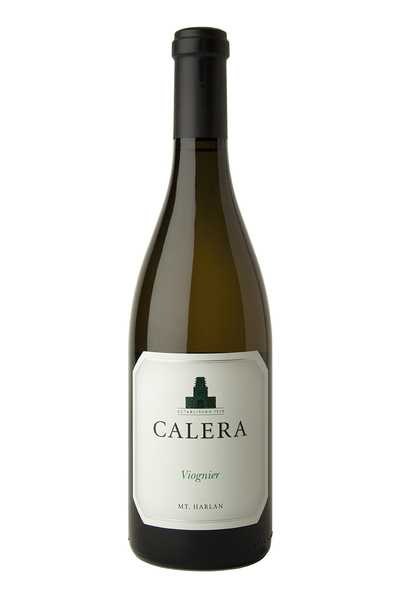
- Category:
- Country:
- Tasting Notes:Bright, Crisp, Tropical Fruit
- Food Pairing:N/A
- ABV:14.5%
As some of the first Viognier planted in California, Calera’s Mt. Harlan Viognier is a must try wine whose tropical flavors pair beautifully with any dish. To accentuate its more delicate aromas, this cool-climate Viognier was fermented entirely in concrete. The first sip is supple and viscous, and as it unfurls a current of bright acid emerges, framing the flavors and driving the wine to a tantalizing finish.
$35.99
Calera Mt. Harlan Pinot Noir Ryan Vineyard
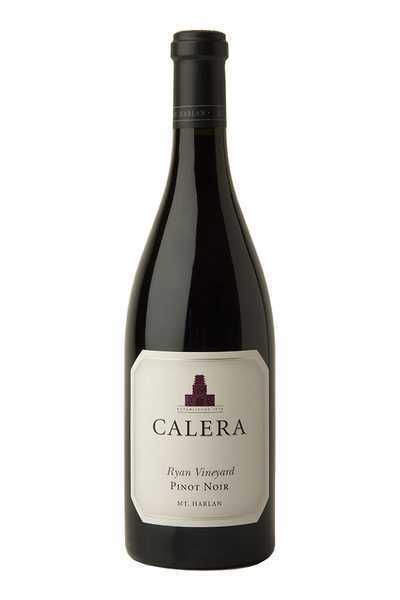
- Category:
- Country:
- Tasting Notes:Bold, Cherry, Dark Fruit
- Food Pairing:Fish - Meaty & Oily, Duck & Game Bird
- ABV:14.5%
Planted in 1998, Ryan Vineyard is at an elevation of 2,500 feet (our highest vineyard on Mt. Harlan). It produces a Pinot Noir that is bright and complex with lively red fruit and hints of that definitive Mt. Harlan minerality.
94 pts - Jeb Dunnuck (v.17)
94 pts - Wine Enthusiast (v.16)
$63.99
Calera Mt. Harlan Pinot Noir Jensen Vineyard
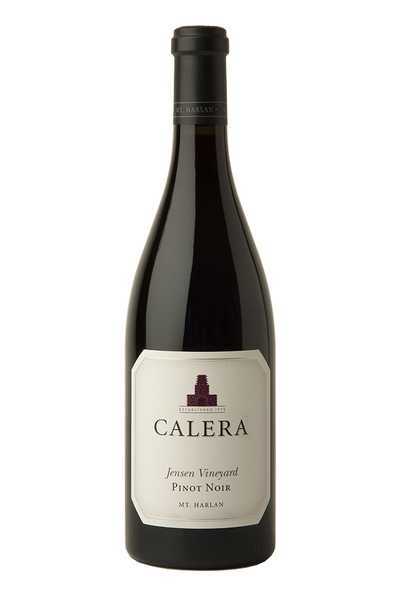
- Category:
- Country:
- Tasting Notes:Balanced, Cherry, Dark Fruit
- Food Pairing:Fish - Meaty & Oily, Duck & Game Bird
- ABV:14.3%
Planted in 1975, the 14-acre Jensen Vineyard is made up of four hillside blocks, each with a unique exposure. Perhaps the most sought-after wine in Calera’s Portfolio, these four blocks produce a profoundly complex and age-worthy Pinot Noir that balances energy and intensity with old-vine nuance and sophistication.
99 pts - Jeb Dunnuck (v.17)
94 pts - Wine Enthusiast (v.16)
$89.99
Rudy Pinot Noir
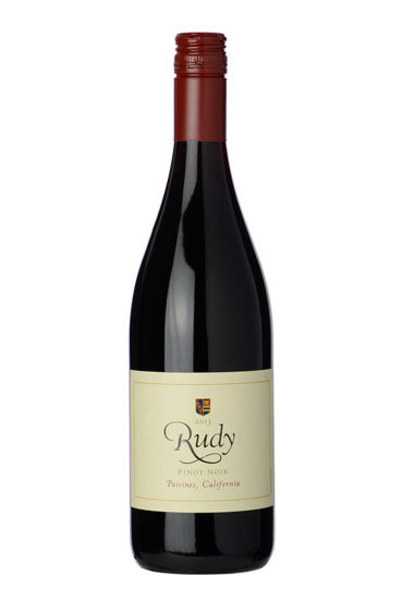
- Category:
- Country:
- Tasting Notes:N/A
- Food Pairing:Fish - Meaty & Oily, Duck & Game Bird
- ABV:14.2%
Discover Rudy Pinot Noir Beer. Is a carbonated, fermented alcoholic beverage. You can learn more about this beer and its availability here.
$29.99
Calera Mt. Harlan Pinot Noir Mills Vineyard
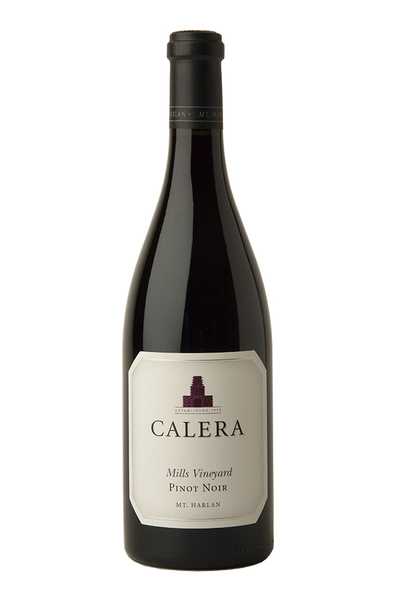
- Category:
- Country:
- Tasting Notes:Bold, Dark Fruit, Minerality
- Food Pairing:Fish - Meaty & Oily, Duck & Game Bird
- ABV:14.5%
A robust and expressive Pinot Noir that marries lovely dark berry layers of black currant and raspberry, with sophisticated notes of black tea, mushrooms and moist earth. On the palate, smooth, flowing tannins accentuate the rich fruit, while adding to a lush, concentrated finish.
97 pts - Jeb Dunnuck (v.17)
94 pts - Wine & Spirits (v.16)
$71.99
Calera Mt. Harlan Pinot Noir Reed Vineyard
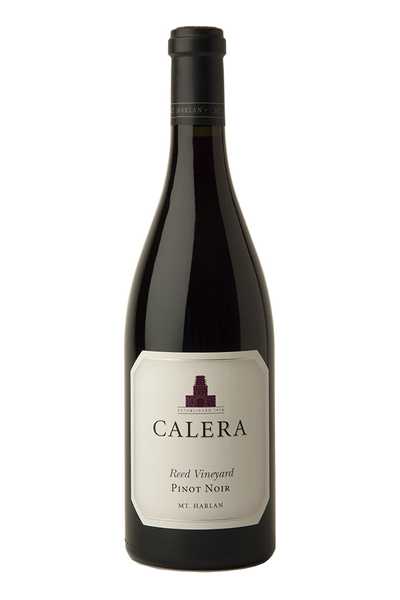
- Category:
- Country:
- Tasting Notes:Cherry, Herbal, Red Fruit
- Food Pairing:Fish - Meaty & Oily, Duck & Game Bird
- ABV:14.5%
A Pinot Noir with fascinating aromatic complexity. On the nose, red cherry and rhubarb mingle with layers of smoked game and hints of dried herbs and spice. The lush red fruit is echoed on the palate, where it is underscored by supple, flowing tannins that carry the flavors to a long, compelling finish.
94 Pts - Wine Enthusiast (v.17)
95 Pts - Wine &Spirits (v.16)
$77.24
Drops of Jupiter Pinot Noir Red Wine
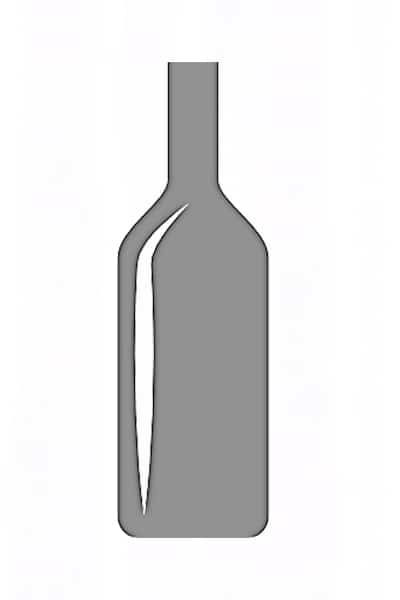
- Category:
- Country:
- Tasting Notes:N/A
- Food Pairing:N/A
- ABV:N/A
Discover Drops of Jupiter Pinot Noir Red Wine Beer. Is a carbonated, fermented alcoholic beverage. You can learn more about this beer and its availability here.
$15.79
Donati Family Vyd Cabernet Sauvignon Ezio
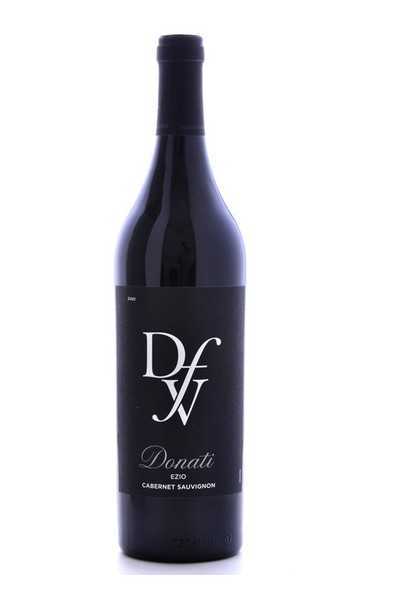
- Category:
- Country:
- Tasting Notes:N/A
- Food Pairing:Beef, Duck & Game Bird
- ABV:13.8%
Indicative Blend: Predominantly Cabernet Sauvignon with Merlot. Formerly Donati Family Vineyard Ezio Cabernet Sauvignon was not labeled as Cabernet Sauvignon.
This is the second most highly rated Paicines wine (based on critic scores): the 2010 vintage was given a score of 90 by Wine Enthusiast.
Ranked second for number of awards won among wines from this region: the San Francisco Chronicle Wine Competition awarded the 2010 vintage Gold and the 2011 vintage Silver.
This is the highest-priced red wine from Paicines. The price has been stable over the past year.
Average Price $ 31 (USD)
$31.49
Broc Cellars Sogi Cabernet Pfeffer
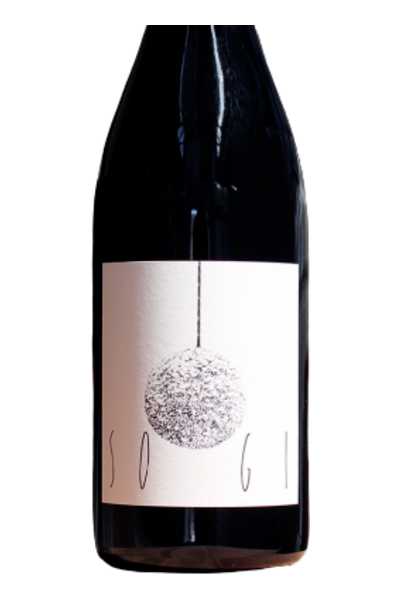
- Category:
- Country:
- Tasting Notes:N/A
- Food Pairing:N/A
- ABV:12.5%
This is our first vintage working with Cabernet Pfeffer. We know that this varietal tends to have aggressive tannins, so we decided to ferment it using carbonic maceration. It was fermented in concrete, then pressed to neutral French oak barrels to allow the wine to breath. The wine aged for 14 months.
Cabernet Pfeffer is thought to be a child of Cabernet Sauvignon and Trousseau Noir. Some people believe it is Gros Verdot, but no one is certain and it is probably not true. Dr. Pfeffer was a horticulturist in San Jose who identified the variety and named it! (Pfeffer is also the name for pepper in German)
Sogi is a nickname for the area where the vineyard is located in relation to our winery. Broc Cellars is located on 5thand Gilman Street in the Gilman district of Berkeley. The vineyard is located South of Gilman – hence SOGI ! The image is a Sugi – which is a cedar ball in Japan. We loved the idea of Sogi and Sugi!
$34.99
Pietra Santa Cabernet Sauvignon

- Category:
- Country:
- Tasting Notes:N/A
- Food Pairing:Beef, Duck & Game Bird
- ABV:N/A
Cabernet Sauvignon is probably the most famous red wine grape variety on Earth. It is rivaled in this regard only by its Bordeaux stablemate Merlot, and its opposite number in Burgundy, Pinot Noir. From its origins in Bordeaux, Cabernet has successfully spread to almost every wine-growing country in the world. It is now the key grape variety in many first-rate New World wine regions, most notably Napa Valley, Coonawarra and Maipo Valley. Wherever they come from, Cabernet Sauvignon wines always seem to demonstrate a handful of common character traits; deep color, good tannin structure, moderate acidity and aromas of blackcurrant, tomato leaf, dark spices and cedarwood. Used as frequently in blends as in varietal wines, Cabernet Sauvignon has a large number of common blending partners. Apart from the obvious Merlot and Cabernet Franc, the most prevalent of these are Malbec, Petit Verdot and Carmenere (the ingredients of a classic Bordeaux Blend), Syrah/Shiraz (in Australia) and Tempranillo (in Spain and South America). Even the bold Tannat-based wines of Madiran are now generally softened with Cabernet Sauvignon. Cabernet Sauvignon Cabernet Sauvignon Grapes © Jonathan Reeve DNA profiling carried out in California in 1997 confirmed that Cabernet Sauvignon is the product of a natural genetic crossing between key Bordeaux grape varieties Cabernet Franc and Sauvignon Blanc. Most wine authorities agree that this crossing happened only within the past few centuries, making the variety's global fame and dominance all the more impressive. (© Wine-Searcher) There are two key reasons for Cabernet Sauvignon's rise to dominance. The most simple and primordial of these is that its vines are highly adaptable to different soil types and climates; it is grown at latitudes as disparate as 50°N (Okanagan in Canada) and 20°S (northern Argentina), and in soils as different as the Pessac-Leognan gravels and the iron-rich terra rossa of Coonawarra. Secondary to this, but just as important, is that despite the diversity of terroirs in which the vine is grown, Cabernet Sauvignon wines retain an inimitable "Cab" character, nuanced with hints of provenance in the best-made examples. There is just a single reason, however, for the durability of the variety's fame and that is simple economics; the familiarity and marketability of the Cabernet Sauvignon name has an irresistible lure to wine companies looking for a reliable return on their investment. A vigorous variety (another characteristic in its favor), Cabernet Sauvignon produces a dense leaf canopy and relatively high grape yields, giving wine producers a fairly open choice between quantity and quality. Careful vineyard management is essential, however, to coax the best out of the fruit. As a late-flowering and late-ripening variety, Cabernet Sauvignon grapes mature slowly. This can also work for or against wine quality; in a cold season or climate there is a risk of the grapes failing to ripen fully, while in most other conditions the steady rate of progress offers producers a wider choice of harvest dates. Few would argue that the finest examples of Cabernet Sauvignon wine are found in Bordeaux and California, a standpoint supported by the 1976 Judgment of Paris. The past two decades have seen a raft of quality Cabernets emerging from New World regions such as Maipo in Chile and Coonawarra in Australia. These are gaining popularity with an increasingly broad consumer base as the world's most prestigious Cabernet Sauvignon wines become prohibitively expensive. The variety has now made its way even into such established and traditional Italian names as Chianti and Carmignano (albeit restricted to 15% of the permitted blend), evidence that even the oldest and most traditional wine institutions now recognize the value of this most famous of grapes.
$16.56
Williams Selyem Late Harvest Gewurztraminer 2013
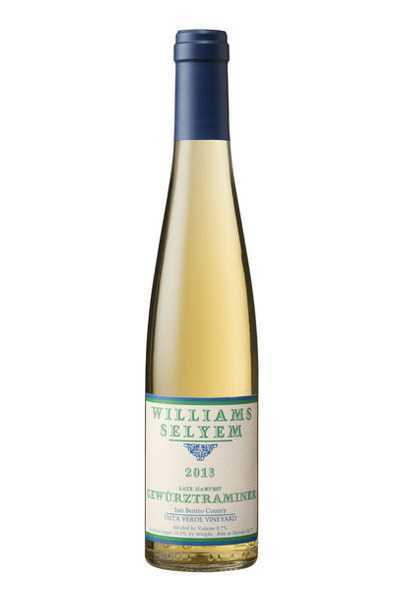
- Category:
- Country:
- Tasting Notes:N/A
- Food Pairing:N/A
- ABV:8.7%
Classic Gewürztraminer aromas of rose oil and lychee permeate the glass. Underneath these high notes lie elements of yellow apple, muskmelon, and ripe Comice pear. The floral qualities of gardenia give way to powdery, crushed rock notes — typical of the Vista Verde Vineyard. The wine’s sweetness is extremely well-balanced thanks to the acidity, which makes this wine light and graceful. A hint of sweet nutmeg and vanilla on the finish round out this delicious offering.
$57.99